Sustainable Tourism in Chopta: Eco-Friendly Travel Tips
Published on November 13, 2025
Nestled in the serene Garhwal Himalayas, Chopta is a place where nature still whispers in its purest form — untouched forests, crystal-clear skies, and trails that lead to the ancient Tungnath Temple and beyond. But with its growing popularity among travelers, this fragile Himalayan destination now faces the challenge of balancing tourism with preservation. That’s where sustainable tourism comes in — not as a trend, but as a necessity.
When you book a Chopta Tour Package or plan a Chopta tour package from Delhi, it’s more than just a getaway — it’s an opportunity to travel responsibly. Sustainable tourism in Chopta means respecting the land, supporting the local communities, and leaving behind nothing but footprints. Every eco-conscious choice — whether it’s staying at a local homestay, avoiding plastic, or trekking mindfully — helps keep Chopta’s charm alive for future generations.
By choosing greener ways to explore, travelers become guardians of this mountain paradise. Chopta doesn’t just need visitors; it needs mindful explorers who value its silence, honor its traditions, and protect its forests. Sustainable travel ensures that the magic of Chopta — its misty mornings, pine-scented air, and peaceful trails — continues to inspire every soul that arrives seeking nature’s true beauty.
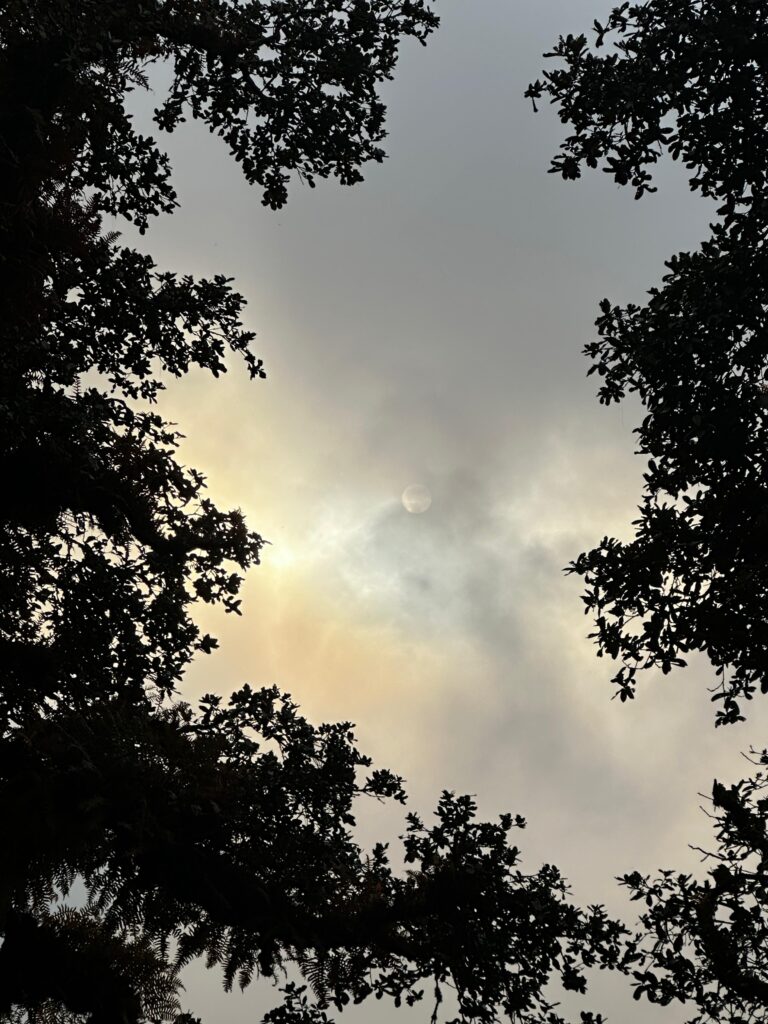
Understanding Chopta’s Fragile Himalayan Ecosystem
The breathtaking landscapes of Chopta are more than just a traveler’s delight — they are part of a delicate Himalayan ecosystem that sustains rare flora, fauna, and high-altitude life. When adventurers set out on the Chopta Tungnath trek or embark on the Chopta Chandrashila trek from Delhi, they step into a living sanctuary where every tree, stream, and meadow plays a vital role in maintaining the region’s natural balance.
This ecosystem is fragile because of its altitude and climate. Even the slightest human disturbance — from littering trails to overusing resources — can have long-term effects on soil, vegetation, and wildlife. The alpine meadows that look so inviting are home to countless species that thrive only in undisturbed environments. Sustainable trekking practices help preserve this fragile balance, ensuring that the next traveler witnesses the same unspoiled beauty.
To truly experience Chopta is to understand its sensitivity — to walk gently on its trails, minimize waste, and respect its rhythm. Every eco-friendly step on the Chopta Tungnath trek or the Chopta Chandrashila trek from Delhi becomes an act of preservation, helping keep this Himalayan wonderland alive and thriving for years to come.
Travel Light, Leave No Trace: The Golden Rule of Eco-Trekking
When you set out for the Chandrashila Summit trek or plan the Chopta Tungnath Trek From Delhi, remember one simple rule — travel light and leave no trace. In the heart of the Himalayas, where every trail winds through ancient forests and sacred peaks, even the smallest act of carelessness can leave a lasting mark on nature. Eco-trekking isn’t just about reaching the summit; it’s about ensuring that your journey doesn’t harm the beauty you came to admire.
Carrying only what you truly need makes your trek easier and more responsible. Ditch the disposable plastics, pack reusable bottles, and keep your belongings minimal. The lighter your backpack, the lesser your environmental footprint. As you move through Chopta’s breathtaking landscapes, from lush meadows to the snow-kissed path of the Chandrashila Summit trek, take nothing but photos and leave behind nothing but footprints.
Respecting this golden rule helps maintain the purity of Chopta’s trails. Avoid littering, stay on marked paths, and dispose of waste properly — or even better, carry it back down. Every mindful step on the Chopta Tungnath trek from Delhi reflects your commitment to preserving the mountains. When travelers follow this principle, Chopta remains as pristine and peaceful as it has always been — a sanctuary for both nature and the souls seeking its serenity.
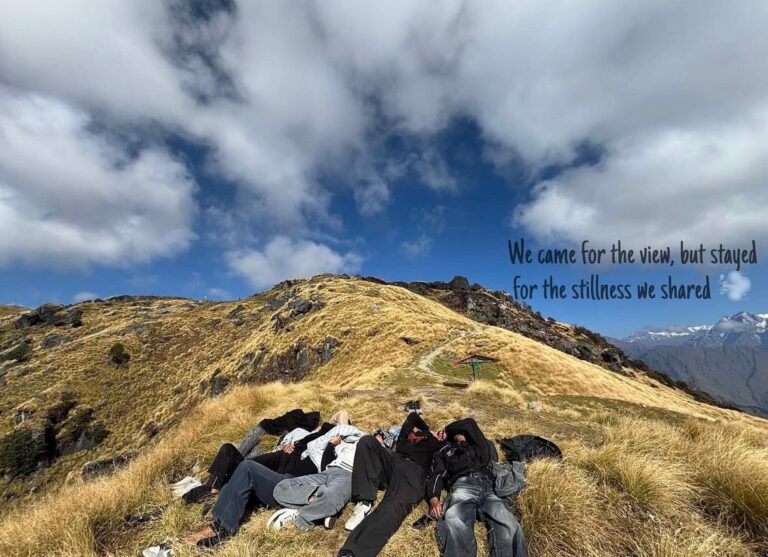
Choose Responsible Treks: Tungnath and Chandrashila the Green Way
The Tungnath Temple trek and Chandrashila trek are among the most soul-stirring journeys in the Himalayas — trails where spirituality meets nature’s brilliance. But as their popularity grows, so does the responsibility to protect these sacred routes. Choosing to trek responsibly ensures that the same pristine paths, snow-kissed peaks, and ancient shrines remain untouched for generations to come.
Trek with Awareness, Not Just Adventure
The Tungnath trek isn’t just a climb; it’s a pilgrimage through ancient pine forests leading to the highest Shiva temple in the world. Every step on this route carries cultural and environmental importance. Avoid shortcuts that harm fragile vegetation and stick to marked trails. Walk softly, breathe deeply, and let the mountain rhythm guide your pace instead of rushing to the top.
The Chandrashila trek, known for its panoramic sunrise views, offers more than a picture-perfect summit — it’s a reminder of how nature rewards patience and respect. When embarking on the Tungnath Chandrashila Trek From Delhi, remember that sustainable trekking isn’t about conquering peaks; it’s about becoming part of their silence and serenity.
Support Local, Stay Local
Responsible trekking also means supporting Chopta’s local communities. Choose homestays, eat at local dhabas, and hire regional guides who know the land and its stories. By doing this, you help sustain livelihoods that depend on eco-friendly tourism. These choices reduce environmental strain while deepening your connection with the Himalayan culture.
Protect Nature’s Gifts Along the Trail
From crystal-clear mountain streams to meadows filled with rhododendrons, every part of the Tungnath temple trek is nature’s artwork. Carry your own water bottle and avoid single-use plastics. Refill at natural sources only when safe and ensure no soap or detergent enters the streams. The purity of Chopta’s environment is its biggest treasure — keep it that way..
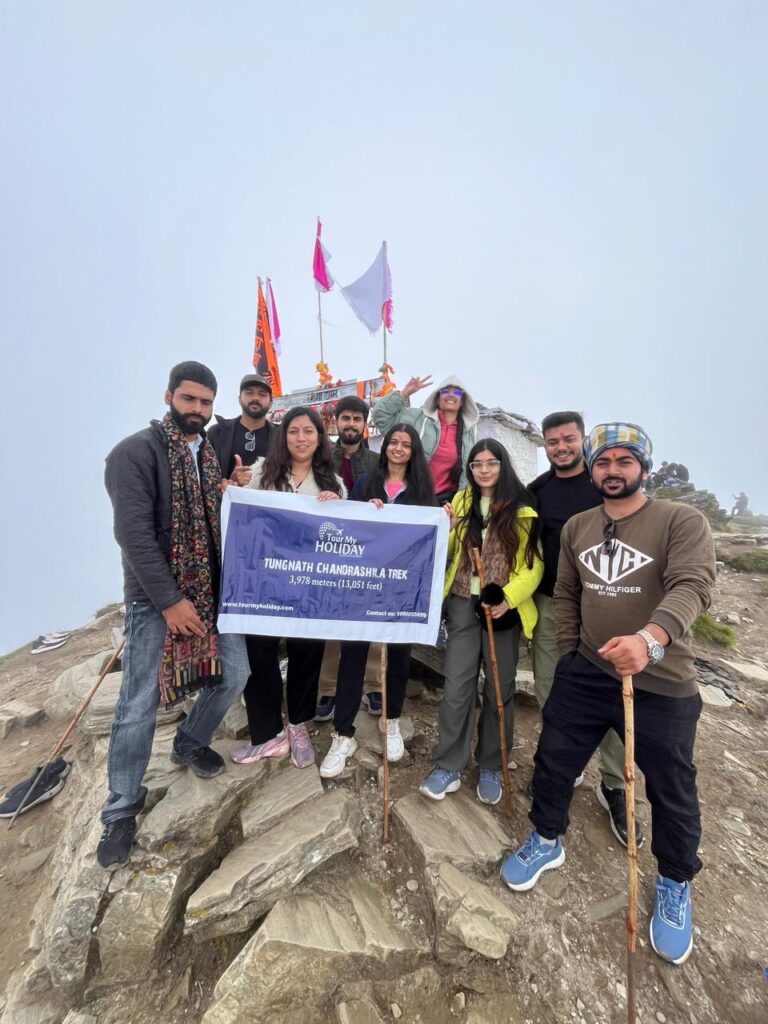
Stay Green: Pick Eco-Friendly Stays and Camps in Chopta
When you set out for the Chopta Chandrashila trek from Delhi or plan the Chopta Tungnath trek from Delhi, your journey doesn’t just begin on the trail — it begins with where you choose to stay. Selecting eco-friendly stays and sustainable camps in Chopta is one of the most powerful ways to protect this Himalayan paradise while still enjoying its breathtaking beauty.
Chopta offers a range of charming accommodations that blend comfort with consciousness. From rustic wooden cottages powered by solar energy to cozy camps that practice zero-waste living, these stays are built to coexist with nature, not compete against it. When you choose such lodgings, you reduce your carbon footprint and directly support local communities that are committed to preserving their land.
Imagine waking up to the soft rustle of deodar trees and the distant chants echoing from the Tungnath temple trail. Eco-friendly stays often rely on local produce for meals, minimize plastic use, and encourage guests to conserve water and energy — all while offering a serene atmosphere that perfectly complements the rhythm of the Chandrashila Summit trek.
Choosing to stay green isn’t a compromise; it’s a privilege — one that lets you enjoy Chopta’s natural serenity responsibly. So, before you lace up your trekking boots and begin your Chopta Tungnath trek from Delhi, make your stay count. Pick a place that shares your respect for the mountains. After all, the more we live in harmony with nature, the more it welcomes us back with open skies and endless peace.
Support Local Communities and Sustainable Businesses
The real heart of Chopta lies not only in its rolling meadows and snow-capped peaks but also in the warmth of its people. When you explore this Himalayan haven through the Chopta Tungnath trek from Delhi or the Chopta Chandrashila trek from Delhi, you walk through villages where every smile, cup of chai, and handmade souvenir tells a story. Supporting local communities isn’t just about spending money — it’s about giving back to the very people who make your journey possible.
Choosing local homestays over commercial hotels ensures that your travel money directly helps the mountain families who protect and nurture this fragile ecosystem. Eat traditional Garhwali meals cooked with local ingredients, hire regional guides who know every hidden corner of the trail, and purchase handmade woolens or wooden crafts instead of mass-produced souvenirs. Each of these choices fuels the sustainable cycle of responsible tourism.
Even small gestures — like tipping your porter fairly, respecting village customs, and minimizing food waste — have a lasting impact. When travelers consciously support the local economy, they help reduce the community’s dependency on unsustainable practices, encouraging a greener future for Chopta.
Every eco-friendly trek, whether it’s the peaceful Tungnath Temple route or the adventurous Chandrashila summit trek, becomes more meaningful when it uplifts the hands that preserve the land. Travel with gratitude, connect deeply, and let your presence bring positivity to both people and place — that’s what true sustainable tourism in Chopta is all about.

Say No to Plastic: Keep Chopta Litter-Free
The untouched beauty of Chopta depends on one simple act — keeping it clean. As more travelers arrive for the Tungnath Temple trek, Tungnath trek, and Chandrashila trek, it becomes our shared responsibility to ensure that this Himalayan paradise stays free from plastic waste. Plastic pollution not only spoils the charm of the meadows and forests but also har
Step 1: Carry Reusables Instead of Disposables
Bring your own reusable water bottle, steel straw, and cloth bag. Instead of buying plastic bottles on the Tungnath trek or Chandrashila trek, refill your bottle at natural springs or local shops offering filtered water. This small habit reduces plastic waste drastically.
Step 2: Pack Smart and Eco-Friendly
Avoid snacks in single-use packaging. Carry dry fruits, nuts, or food in reusable containers. If you bring packaged food, take all wrappers back with you — don’t leave them on the trail. Remember, even a single wrapper takes years to decompose in these cold altitudes.
Step 3: Dispose Responsibly
If you find litter along the Tungnath Temple trek path, pick it up and carry it to a proper disposal area. Chopta doesn’t have an extensive waste management system, so carrying your trash back to the plains is one of the kindest things you can do for nature.
Step 4: Choose Plastic-Free Camps and Stays
Select eco-camps and lodges that use minimal plastic — from bamboo cutlery to cloth napkins. The less plastic they use, the lighter the environmental load. Ask beforehand if your stay follows sustainable practices; your demand encourages more such efforts.
Step 5: Spread the Message
Be an example for others. If you see fellow trekkers littering, gently remind them to respect the trails. Awareness grows through action — every mindful traveler inspires ten more.

Save Energy and Water: Small Acts, Big Impact
In the quiet embrace of Chopta, nature provides everything — crystal-clear water from mountain springs, sunlight filtering through pine forests, and fresh air that feels like a gift. But even paradise has its limits. As more travelers visit for the Tungnath trek and Chandrashila trek, the strain on local resources increases. The good news? You don’t need grand gestures to make a difference — small, mindful actions can protect Chopta’s fragile environment in big ways.
Conserve Every Drop
Water in the Himalayas is precious. During your stay or while camping, use it wisely. Skip long showers, turn off taps completely, and avoid washing clothes frequently. When trekking, carry reusable bottles and refill responsibly without polluting the streams. Remember, the same water you use is what sustains life for mountain communities, animals, and forests.
Use Energy Thoughtfully
Electricity in Chopta often comes from limited local sources or solar panels. Be conscious — switch off lights, chargers, and heaters when not needed. Enjoy the natural rhythm of daylight and embrace the simplicity of the mountains. The less energy we use, the more we preserve the peace that makes Chopta so magical.
Go Solar and Sustainable
Choose camps and lodges that rely on solar energy or practice energy-efficient methods. Many eco-stays in Chopta now use solar lanterns and heaters — supporting them encourages a greener travel culture.
Respect Local Resources
Locals depend directly on these natural sources for survival. Avoid wasting firewood, use minimal toiletries, and don’t leave taps running in public wash areas. Your mindfulness helps keep their daily life sustainable.
Pro Tip: Travel Like a Minimalist
While on the Tungnath trek or Chandrashila trek, keep it simple — one light source, one refillable bottle, and limited gadgets. The fewer resources you consume, the deeper your connection with nature becomes.

Respect Wildlife and Natural Trails While Trekking
Trekking through Chopta isn’t just a physical journey — it’s a spiritual and environmental experience. Whether you’re hiking the Tungnath trek or aiming for the Chandrashila summit, every step you take is through a living ecosystem that’s home to countless species of birds, animals, and plants. Respecting wildlife and natural trails isn’t just about being careful — it’s about understanding that we are guests in their home.
Trekking in Harmony with Nature
The trails of Chopta weave through dense oak and rhododendron forests, open meadows, and sacred mountain paths. While trekking, stay on the marked trails — they exist to protect delicate vegetation and prevent soil erosion. Avoid taking shortcuts, as they damage roots and disturb animal habitats. Move quietly; let the mountains be peaceful. The true joy of trekking here lies not in rushing to the summit but in feeling the pulse of the Himalayas with every step.
Observe, Don’t Disturb
Chopta is rich in wildlife — from the colorful Himalayan Monal (the state bird of Uttarakhand) to barking deer, musk deer, and even foxes. If you encounter animals on your Tungnath trek or Chandrashila trek, maintain a respectful distance. Never feed them; it alters their natural behavior and can be harmful to their health. Let your camera capture the moment quietly, without flash or noise.
Preserve the Natural Trails
Natural trails are living pathways shaped over centuries. Keep them clean by carrying back all your waste, including fruit peels and paper. Avoid breaking branches or plucking flowers — they belong to the landscape. Respect local signs and instructions, especially near the Tungnath Temple, where both nature and spirituality coexist.
Trek Responsibly and Prepare Well
Before starting your trek, ensure you’re physically ready and equipped with proper trekking shoes, weather-proof clothing, and minimal gear. Walk at your own pace — high-altitude trekking requires patience. Respect the limits of your body and the trail. The Chandrashila summit trek rewards you not just with views of Nanda Devi and Trishul peaks but also with a sense of humility — a reminder that nature is far greater than us.
Pro Tip: Trek Light, Trek Kind
When trekking in Chopta, practice the “Three R’s” — Respect, Responsibility, and Restraint. Respect the wildlife, be responsible for your waste, and show restraint by not disturbing the natural flow of life. If you see others harming the environment, educate them kindly — your voice can protect the mountains.

Use Sustainable Transport: Carpool, Trek, or Take Public Options
Reaching Chopta is an adventure in itself — winding mountain roads, fresh pine-scented air, and breathtaking views at every turn. But how you choose to travel matters just as much as where you’re headed. The rise in private vehicle use has added unnecessary carbon footprints to these fragile Himalayan zones. Choosing sustainable transport options isn’t just an eco-friendly choice — it’s a way of showing respect to the land that welcomes you.
Carpool Whenever Possible
If you’re traveling for the Chopta Tungnath trek from Delhi or planning a group trip for the Chandrashila trek, carpooling is the simplest way to reduce your environmental impact. Sharing rides with fellow travelers not only cuts down emissions but also makes the journey more social and fun. You’ll save fuel, reduce traffic on narrow mountain roads, and make new friends along the way.
Take Public Transport for a Greener Journey
Public buses and shared jeeps operate regularly from Haridwar, Rishikesh, and Rudraprayag to Chopta. Choosing public transport may take a little longer, but it significantly reduces your carbon footprint. Plus, it allows you to experience local life, interact with residents, and travel like a true explorer instead of a tourist.
Trek More, Drive Less
Once you’re in the region, try to cover shorter distances on foot. Trekking between nearby villages or walking to the trailheads of Tungnath Temple trek and Chandrashila summit trek gives you a deeper connection with the mountains while keeping pollution minimal. Walking is not only the greenest option — it’s also the most rewarding.
Opt for Eco-Friendly Vehicles
If you must hire a vehicle, look for cabs that use CNG, hybrid, or electric options wherever available. Some travel operators in Uttarakhand are now promoting greener transport choices — supporting them helps the local shift toward sustainability.
Pro Tip: Plan Smart, Travel Light
Before starting your Chopta Tungnath trek from Delhi, plan your route efficiently to avoid unnecessary detours and fuel use. Combine destinations — like Sari village, Deoria Tal, Tungnath, and Chandrashila — in one route rather than multiple trips. Light travel equals lighter impact.
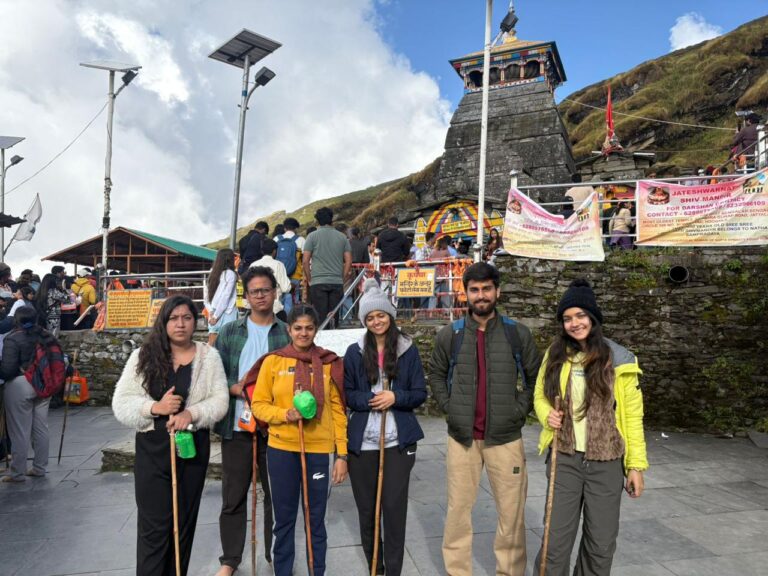
Practice Mindful Travel: Connect with Nature, Not Just Wi-Fi
In the digital age, it’s easy to stay connected to the world — but in Chopta, the real magic lies in disconnecting from it. When you embark on the Chopta Tungnath trek from Delhi or hike toward the Chandrashila summit, you step into a world where time slows down, phones lose signal, and your heart finally syncs with nature’s rhythm. Mindful travel here means being fully present — not just clicking pictures but feeling the moment, hearing the silence, and truly connecting with the soul of the mountains.
Be Present, Not Just a Visitor
Put away your phone for a while and let Chopta speak to you. Listen to the wind rustling through pine trees, watch the clouds drift across snow peaks, and feel the earth beneath your boots. When trekking through the Tungnath Temple trail or the Chandrashila trek, focus on your breathing, your steps, and the scent of the forest — that’s real mindfulness.
Unplug to Reconnect
Instead of chasing Wi-Fi signals, chase the sunrise from Chandrashila or the star-filled skies above Chopta meadows. In a world that moves fast, Chopta invites you to slow down — to meditate by a mountain stream, read by a bonfire, or simply sit in silence. These quiet moments rejuvenate your mind far more than any online escape ever could.
Travel with Intention
Before beginning your Chopta Tungnath trek from Delhi, set an intention — to travel lightly, observe deeply, and leave the place better than you found it. Every mindful act, from refusing plastic to greeting a local with respect, adds to the positive energy of your journey.
Respect the Rhythm of Nature
Wake up early with the sunrise, rest as the stars appear, and move with the natural flow of the day. The mountains teach patience, gratitude, and balance — values that we often lose in city life. By aligning your travel pace with nature’s rhythm, you’ll discover a sense of peace that no internet connection can provide.
Pro Tip: Go Offline, Go Inward
During your Chandrashila summit trek, keep your phone on airplane mode and let your senses do the exploring. Journal your thoughts, sketch the scenery, or simply watch the horizon — you’ll find clarity that no screen can offer.

Participate in Local Conservation and Clean-Up Drives
Chopta’s beauty thrives because of those who care for it — locals, trekkers, and travelers who believe that preserving the Himalayas is a shared responsibility. When you visit this pristine region for the Chopta Tungnath trek or the Chandrashila summit trek, you don’t just have the chance to admire its beauty — you have the opportunity to protect it. Participating in local conservation and clean-up drives is one of the most meaningful ways to give back to these mountains that give us so much.
Be a Guardian, Not Just a Guest
Instead of being a passive visitor, become an active protector of Chopta’s natural charm. Join clean-up drives organized by local eco-groups, forest departments, or homestays. These initiatives often involve collecting litter from the Tungnath Temple trek route or nearby meadows that get affected by seasonal tourist influx. Your effort, no matter how small, directly restores the balance of this fragile ecosystem.
Support Reforestation and Awareness Programs
Some local NGOs and village communities run reforestation campaigns to combat deforestation caused by increased tourism. Planting even one sapling during your stay helps rebuild what’s lost. Encourage awareness by sharing the importance of eco-friendly travel with other trekkers — one inspired traveler can influence many.
Join or Organize a Trail Clean-Up
Before or after your Chopta Tungnath trek from Delhi, set aside an hour for a simple act — picking up litter along the path. Many travelers now bring small eco-bags to collect waste during their trek. It’s an easy, powerful gesture that keeps the meadows green and the streams pure.
Engage with Locals to Learn and Help
Talk to local residents and understand how they maintain their environment sustainably. You might learn about traditional waste management practices, organic farming, or eco-tourism projects. Volunteering your time or spreading awareness about their efforts helps strengthen these initiatives.
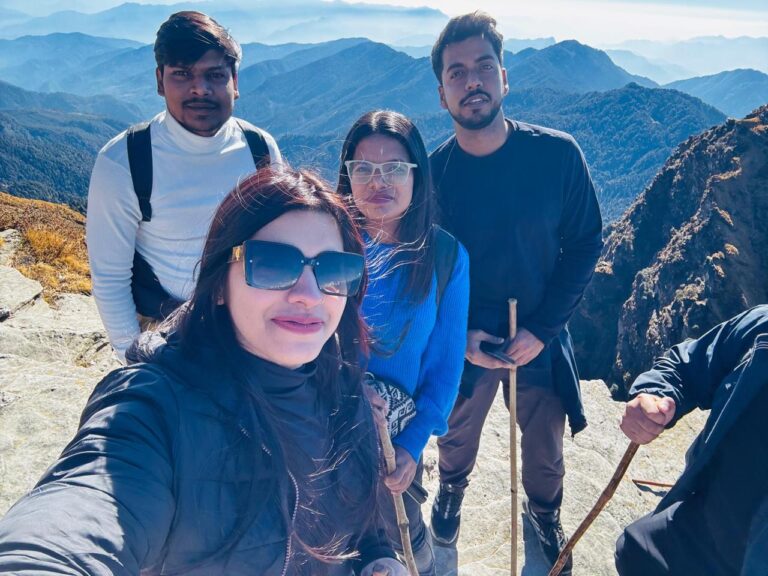
Best Time to Visit Chopta for Eco-Friendly Exploration
Chopta, the “Gateway to Tungnath,” welcomes travelers year-round with its changing colors, peaceful trails, and fresh mountain air. But if you’re planning an eco-friendly trip, knowing when to go makes all the difference. Here’s a month-wise breakdown with temperatures and tips to help you experience the region responsibly.
January – February: Silent Snow Trails
-
Temperature: -5°C to 10°C
-
Experience: The meadows and forests of Chopta sleep under a blanket of snow — ideal for those who love peace and snow-trekking.
-
Eco Tip: Carry reusable water bottles and avoid disposable cups. Winter waste is hard to collect in snow-covered zones.
-
Trek Note: If you’re doing the Tungnath Temple Trek or Chandrashila Summit Trek, hire local guides for safety and support the local winter economy.
March – April: Buransh Bloom Season
-
Temperature: 5°C to 15°C
-
Experience: The forest turns red with rhododendron (Buransh) flowers — perfect for photographers and nature lovers.
-
Eco Tip: Stick to the designated Tungnath Trek paths to protect budding flora.
-
Pro Tip: Try local Buransh juice instead of packaged energy drinks — it’s natural, refreshing, and supports local women’s cooperatives.
May – June: Green Trails and Clear Skies
-
Temperature: 10°C to 20°C
-
Experience: Summer brings warmth, perfect for long hikes and camping under the stars.
-
Eco Tip: Use solar-powered lamps or shared campsite facilities to save energy.
-
Sustainable Trek Idea: Plan a Chopta Chandrashila Trek From Delhi using shared transport or trains to reduce carbon footprint.
July – August: The Rain-Kissed Forests
-
Temperature: 12°C to 18°C
-
Experience: The monsoon covers Chopta in thick mist and lush greenery — though trails can get slippery.
-
Eco Tip: Carry reusable rain gear and avoid trekking during heavy rains to prevent trail erosion.
-
Good to Know: This season is ideal for quiet eco-retreats and meditation stays rather than high-altitude treks.
September – October: The Golden Season
-
Temperature: 8°C to 15°C
-
Experience: Clear skies, golden forests, and perfect trekking weather — this is one of the best times for Tungnath Chandrashila Trek From Delhi.
-
Eco Tip: Choose eco-lodges or homestays that use solar energy and practice waste segregation.
-
Trek Highlight: The Chandrashila Trek rewards you with panoramic Himalayan views and minimal crowd disturbance — ideal for mindful, eco-conscious travelers.
November – December: Frosty Mornings and Starry Nights
-
Temperature: -2°C to 12°C
-
Experience: Crisp air, quiet trails, and a chance to see snow on the higher slopes — perfect for those who love solitude.
-
Eco Tip: Use biodegradable toiletries and avoid bonfires on open grounds to protect alpine grasslands.
-
Sustainable Choice: Book small group tours or private carpool options instead of multiple vehicles.
Eco-Friendly Tip for All Seasons
No matter when you visit, remember: travel slow, respect local culture, and leave no trace. Every small step — carrying a cloth bag, refilling your bottle, or supporting a local eco-camp — helps preserve Chopta’s natural charm for generations to come.
| Month | Temperature (°C) | Experience | Eco-Friendly Tips & Trek Highlights |
|---|---|---|---|
| January – February | -5°C to 10°C | Snow-covered meadows and silent trails; perfect for peaceful explorers. | Use reusable bottles and steel mugs. If trekking the Tungnath Temple Trek or Chandrashila Trek, hire local guides to ensure safe and sustainable journeys. |
| March – April | 5°C to 15°C | Forests bloom with red Buransh flowers — a stunning spring sight. | Stick to official Tungnath Trek paths to protect new flora. Enjoy local Buransh juice instead of plastic-bottled drinks — a tasty and eco-conscious choice. |
| May – June | 10°C to 20°C | Pleasant weather for camping and long treks under clear skies. | Use solar-powered lights or shared campsite electricity. For an eco-journey, plan the Chopta Chandrashila Trek from Delhi via train or shared cab to cut emissions. |
| July – August | 12°C to 18°C | Misty monsoon forests and fewer tourists — ideal for peaceful stays. | Carry reusable rain gear and avoid heavy-rain treks to prevent trail erosion. Try local eco-stays and spend time in meditation or yoga retreats. |
| September – October | 8°C to 15°C | Golden forests, crystal-clear views — best season for trekking. | Stay in eco-lodges using solar energy. The Tungnath Chandrashila Trek from Delhi offers breathtaking views and minimal crowds for mindful trekkers. |
| November – December | -2°C to 12°C | Frosty mornings, starry nights, and snow dust on the peaks. | Carry biodegradable toiletries and avoid open-ground bonfires. Choose carpooling or small group tours for a low-impact trip during your Chopta Tungnath Trek from Delhi. |

Final Thoughts: Be the Change — Travel Sustainably in Chopta
Every step you take in Chopta echoes through the fragile beauty of the Himalayas. The misty pine forests, the crystal-clear skies, and the peaceful trails of the Chopta Tungnath Trek are not just destinations — they are living ecosystems that depend on our respect and care. Sustainable travel here isn’t just a choice; it’s a promise to protect what makes Chopta timeless.
When you walk the serene paths of the Chopta Chandrashila trek from Delhi, pause to listen — to the rustle of the trees, the chirping of Himalayan birds, and the wind whispering over snow peaks. These sounds remind you that nature flourishes only when humans travel responsibly. Whether you pick up a discarded wrapper, stay in an eco-lodge, or support local guides, your small act of mindfulness leaves a lasting positive imprint on these sacred mountains.
The Chandrashila summit trek teaches a powerful lesson — that true elevation lies not just in reaching the peak, but in preserving the purity of the path that leads there. As travelers, we hold the power to shape the future of places we love. Chopta doesn’t need more footprints; it needs more mindful ones.
So, as you pack your bags for your next Himalayan escape, carry along not just your gear but also your gratitude. Let your journey through Chopta be a story of balance — between adventure and awareness, joy and responsibility. Travel light, tread softly, and let your heart lead the way toward a greener tomorrow.
Frequently Asked Question:
1. What makes Chopta ideal for sustainable tourism?
Chopta’s untouched meadows, serene forests, and eco-sensitive zones make it perfect for sustainable tourism. Its small-scale tourism model and scenic treks like the Chopta Tungnath trek and Chandrashila summit trek allow travelers to explore responsibly without disturbing nature’s balance.
2. How can I plan an eco-friendly Chopta trip from Delhi?
Choose shared transport, carpooling, or public buses for your Chopta Chandrashila trek from Delhi. Book eco-lodges, carry reusable bottles, and follow “leave no trace” principles to ensure your trip has minimal environmental impact.
3. Which is the best time for sustainable exploration in Chopta?
The best time is March to June and September to November when the weather is pleasant, trails are clear, and the ecosystem thrives. These months are ideal for eco-trekking and conservation-focused travel.
4. Are there eco-friendly stays available near Chopta?
Yes! Many local cottages and camps run on solar energy, harvest rainwater, and use biodegradable materials. Staying in such places supports local employment and reduces your carbon footprint during the Chopta Tungnath trek from Delhi.
5. How can trekkers help preserve the Chopta Tungnath and Chandrashila trails?
Avoid littering, stick to marked paths, and do not pluck flowers or disturb wildlife. Carry your waste back, use reusable containers, and encourage fellow trekkers to keep the Chandrashila summit trek trails clean and green.
6. What eco-practices should I follow during the Tungnath Temple trek?
Use refillable water bottles, avoid plastic packaging, and pack light. Respect the sacred environment around Tungnath Temple, one of the highest Shiva shrines, by maintaining silence and cleanliness during your visit.
7. How can I support local communities in Chopta?
Buy handmade souvenirs, eat at local dhabas, and hire village guides for your treks. Supporting locals during your Chopta Chandrashila trek from Delhi ensures your money benefits the people who protect these mountains daily.
8. Is there any volunteer work or clean-up drive I can join in Chopta?
Yes! Several local organizations and eco-stays host clean-up treks and tree-planting drives. Joining these activities adds purpose to your journey and helps preserve the environment for future travelers.
9. What should I pack for an eco-conscious Chopta trek?
Carry biodegradable toiletries, cloth bags, reusable cutlery, and organic sunscreen. A small reusable waste bag for the Chandrashila summit trek ensures you leave the trail cleaner than you found it.
10. Why does sustainable travel matter for future Chopta trekkers?
Sustainable tourism ensures that upcoming generations can still experience the unspoiled beauty of Chopta. Every responsible step on the Chopta Tungnath trek or Chopta Chandrashila trek from Delhi keeps these mountains alive and thriving for tomorrow’s explorers.



